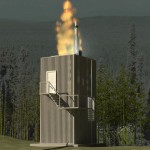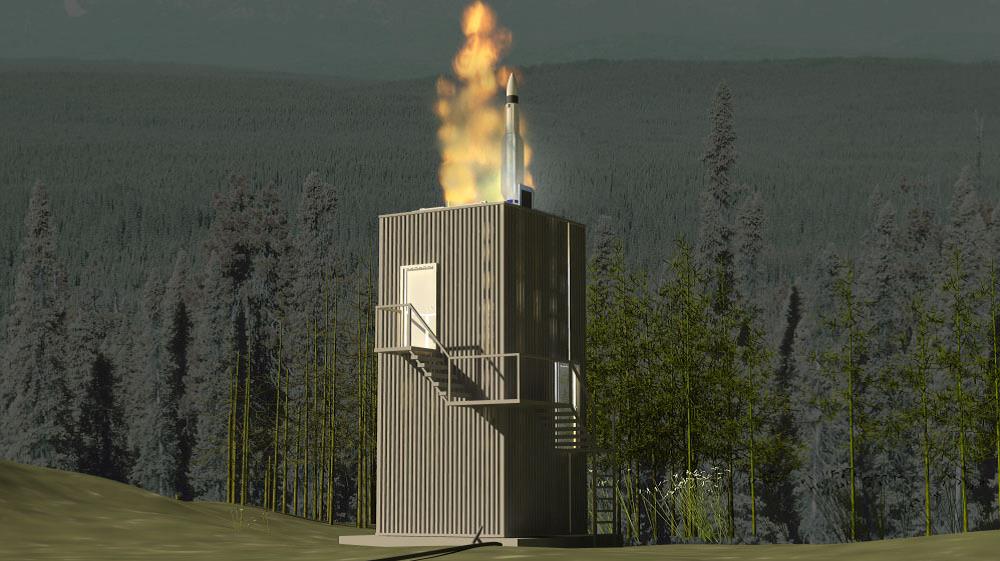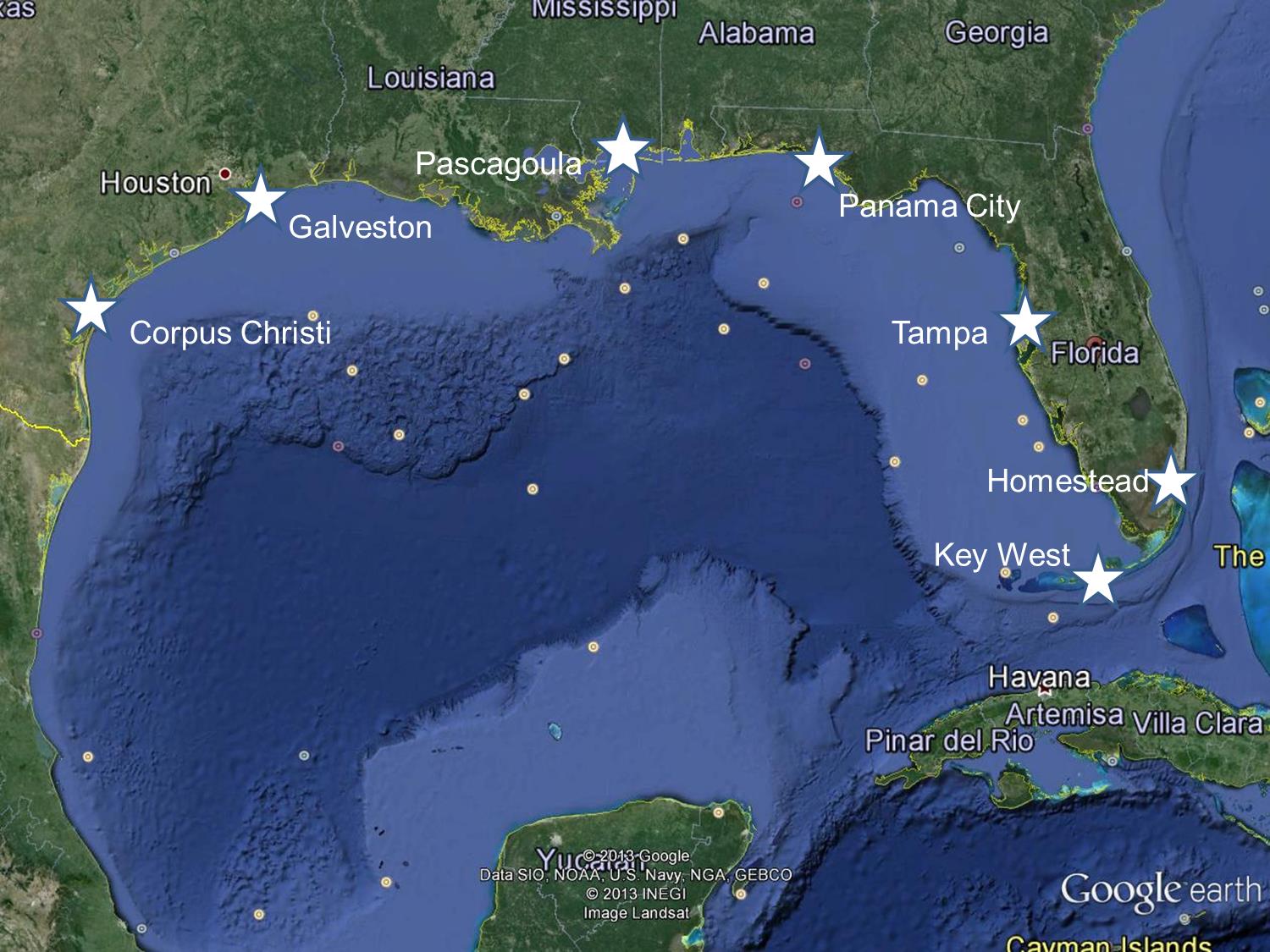Amb. Henry F. Cooper, Chairman . . . Lt. Gen. Daniel Graham, Founder
High Frontier . . Building Truly Effective Defenses . . Reagan’s Vision Lives!
E-Mail Message 131101
Aegis Ashore for Us, Too?
Ambassador Henry F. Cooper
November 1, 2013
Last Monday, construction began at an Aegis Ashore ballistic missile defense site in Romania—to be completed by 2015 to begin defending our NATO allies against ballistic missiles from the Middle East, particularly Iran. A second Aegis Ashore site is planned by 2018. So why no Aegis Ashore sites around the Gulf of Mexico to defend America against Iranian or terrorist ballistic missiles launched from vessels in the Gulf?
As reported earlier this week, construction began last Monday (Oct. 28, 2013) in Deveselu, Romania for the first Aegis Ashore ballistic missile defense (BMD) site. The site, scheduled to be operational in 2015, will include launchers for 24 Standard Missile-3 (SM-3) interceptors, a SPY-1 radar and a command and control system. In effect, these are the same components of the Aegis BMD system that also will by then be deployed on about 35 Aegis ships at sea—some of which already have been stationed in the Mediterranean and occasionally passed through the Bosporus Straits into the Black Sea.
Shown below, from left to right, are US Missile Defense Agency Director Vice Admiral James D. Syring, Romanian President Traian Basescu , US Undersecretary of Defense for Policy James N Miller, and Romanian Defense Minister Mircea Dusa shoveling sand during the official ground breaking ceremony.
This new capability will join U.S. Aegis BMD ships in the Mediterranean and Black Seas, a forward based US TYP-2 radar in Turkey and other ground based theater based defenses against shorter range ballistic missiles, to help defend our NATO allies as well as our troops in the region, especially from ballistic missiles from Iran. The majority of U.S. military forces deployed in Europe today are within the protection and defense of this new missile defense capability.
Within the framework and partnership of NATO, this European Phased Adaptive Approach (EPAA) will defend our European allies and troops against those who seek to threaten Europe from the Middle East (particularly Iran) with ballistic missiles.
The components of Romanian Aegis Ashore system have been tested, including its command and control system in simulated form by Lockheed Martin in Moorestown, New Jersey and will be operationally tested from an Aegis Ashore site being constructed in Kauai, Hawaii. The same components have achieved an impressive at sea test record, achieving 28 successful intercepts (with both the Block IA and IB interceptors) in 34 attempts, including in shooting down a satellite traveling faster than an ICBM. Click here for a summary after the most recent test on September 19th.
The Kauai test site will also provide a de facto defense capability for Hawaii, particularly from ships in the Pacific and potentially even from North Korean intercontinental ballistic missiles (ICBMs).
As we have argued previously, such Aegis Ashore sites could also be deployed around the Gulf of Mexico to defend the United States against ballistic missiles launched from the Gulf—or Latin America.
Of particular note is the potential for defending against a launch that detonates a nuclear weapon a hundred or so miles above the central United States—creating an electromagnetic pulse (EMP) that would shot down the currently unhardened electric power grid for an indefinite period, leading eventually to the death of several hundred million Americans. Today we are completely vulnerable against such an attack.
This is not a hypothetical threat. Iran launched ballistic missiles from vessels in the Caspian Sea over a decade ago—and the diagnostics we obtained from those tests suggest that their payload was intended to be detonated at high altitude, just as we would expect in an EMP attack. As we reported last July 19, a North Korean vessel carrying ballistic missiles capable of carrying nuclear weapons was interdicted in the Panama Canal. So, we have been warned by explicit, not hypothetical, information.
Just to encourage you to think about deployment possibilities, consider the stars on the map below as potential sites for the same Aegis Ashore system being deployed in Romania—and scheduled for deployment in Poland by 2018.
If we can afford to defend our allies—then we can certainly afford to defend Americans—you think?
From press accounts, ongoing studies appear to be focused on ways to improve the defense of the Eastern Seaboard defense against Iranian ICBMs. Additional ground-based BMD sites are being considered for the northeastern United States—reportedly from Maine to as far west as Ohio. (Such sites will take years to build, cost billions and leave us vulnerable to attacks from the south.)
Those studies should also include how best to defend against ballistic missiles launched from vessels off our coasts—especially from the Gulf of Mexico or Latin America. Such an expansion would be consistent with the language of the Defense Authorization Act that directed the Secretary of Defense to provide a report on future improvements for the U.S. homeland defense, including:
- An assessment of the Ballistic missile threat from North Korea and Iran through 2022 and the effectiveness of our current and planned Ballistic Missile Defense (BMD) systems against that threat, including improvements that could result from additional ground based interceptors and sensors, additional ground based BMD sites, enhancements in operations effectiveness, and most notably:
- “[T]he potential for future enhancement and deployment of the[Navy’s] Standard Missile-3 Block IIA interceptor to augment United States homeland ballistic missile defense; missile defense options to defend the United States homeland against ballistic missiles that could be launched from vessels on the seas around the United States, including the Gulf of Mexico, or other ballistic missile threats that could approach the United States from the south, should such a threat arise in the future;” and
- “[A]ny other options the Secretary considers appropriate.”
For each of these options, the Act directs that SecDef evaluate the advantages and disadvantages, including considerations of technical feasibility; operational effectiveness and utility against the projected future threat; cost, cost effectiveness, and affordability; and agility to respond to changes in future threat evolution. Hopefully, this study will address the concerns we have raised about ballistic missiles that might be launched from vessels off our coasts—and particularly from the Gulf of Mexico.
The second bullet above should assure that our suggestion for deploying “Aegis Ashore” sites around the Gulf of Mexico is considered among the counters to the threat from vessels off our coasts. The last sentence of the second bullet opens the door for considering the threat of a satellite-borne nuclear weapon that could be launched by North Korea or Iran over the South Pole to approach the U.S. from the South. Aegis at Sea can help counter that threat.
Stay tuned!
What to do?
High Frontier will continue to inform the powers that be of the existential EMP threat from the south and how deploying Aegis Ashore sites around the Gulf of Mexico can significantly reduce our vulnerability to that threat.
We are even more focused on working with the grass roots as well as local and state authorities. Hopefully, they will urge key federal authorities and their representatives in congress to begin to deal effectively with it, beginning with how the Secretary of Defense deals with these issues in his response to the Defense Authorization Act for 2014.
We met last year with local Mississippi authorities about deploying such a site in Pascagoula, where our Aegis ships are built—not a big deal to build an Aegis Ashore site there. We personally confirmed that they and other local and state authorities up to and including the Governor of Mississippi were receptive to the idea, if the Washington powers that be would accommodate them.
We are now exploring these issues and possibilities with local authorities in Florida, beginning with the possibility or a deployment at Tyndall Air Force Base in Panama City. We will be considering other deployment possibilities as indicated by the “stars” in the above figure and urge that the federal powers that be do their own studies. How many sites are required depends on the velocity of the defensive interceptor—the faster, the fewer sites required. Such considerations should be folded into the scheduled interceptor improvements—e.g., the Block IIA will be a faster interceptor (perhaps by 2018) and would allow wider spacing between Aegis Ashore bases. Studies should also consider Coast Guard vessels that might carry the same components as Aegis Ashore—except on vessels that are commonly deployed in the Gulf.
We consider our message to grass roots America to be urgently important. Our local and state authorities need to understand these issues and what they might do if their federal representatives continue to fail “to provide for the common defense.”
And what can you do?
Join us at High Frontier in seeking to alert the public and our local and state authorities to the existential threats posed by both man-made and natural EMP events—and what can be done about these threats.
We need your help in spreading this information to the grass roots and to encourage all “powers that be” to provide for the common defense as they are sworn to do. Will you do your part?
Begin by passing this message to your friends and suggest they visit our webpage, www.highfrontier.org for more information. Also, please encourage your sphere of influence to sign up for our weekly e-newsletter!
Please click here to read Past Weekly Updates!
Please click here to read past Flash Messages!
Please help High Frontier continue this important and timely work!
Be sure to follow us on our Social Sites!
If you found this letter via our Social Sites, and you would like to subscribe, click below!








